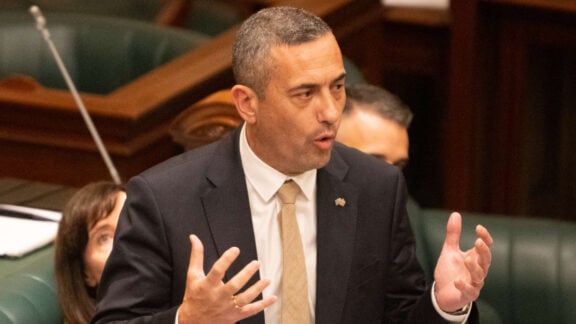Much of eastern and central Australia faces an increased risk of bushfires this spring as the country dries out after years of fairly wet conditions.
Fire chiefs say much of the nation is burdened with high fuel loads after three years under the influence of La Nina weather pattern, which typically drives cooler conditions, more rain and floods in Australia.
But with La Nina now at an end and the hot, dry influence of El Nino likely on its way, the heat could quickly be on when it comes to fires.
The latest spring outlook, released by emergency services on Wednesday, warns of an increased fire risk across large swathes of the Northern Territory, Queensland and NSW and regions in Victoria and South Australia.
Rob Webb is the CEO of the Australasian Fire And Emergency Services Authorities Council, which represents the nation’s fire and emergency services and produces the outlook with the help of the weather bureau.
He says vegetation that could quickly become fuel for fires has bloomed during back-to-back La Nina years and there’s no time to lose to prepare for what might lie ahead.
“The climate influences driving increased risk of bushfire this season are widespread,” he says.
“Almost the entire country can expect drier and warmer conditions than normal this spring, so it is important for Australians be alert to local risks of bushfire over the coming months, regardless of their location.”
A swathe of the Northern Territory’s interior is considered to be at increased risk of fire from September to November, along with a vast, wide band that stretches from just south of Cairns, in Queensland’s far north, to Wollongong, south of Sydney.
There’s another potential hot spot on the South Australian and Victorian border and coastal areas around Gippsland are also at heightened risk.
Risks vary greatly across the nation and depend on a complex set of factors including soil moisture, how long it takes for vegetation to dry out and be ready to burn and weather.
CSIRO fire expert Andrew Sullivan says grass, which has boomed across island Australia, is fairly quick to dry out and become fuel for fires in warm, dry weather.
But that’s not necessarily true for forest growth.
“It does take some time for the fuel in the forest to become fully available. It’s hard to say how long that actually takes, because it depends on many things like the climatology, the structure of the forest, the nature of the fuel,” Dr Sullivan said.
“But generally speaking it won’t be the year that the rains return to normal, or you enter into an El Nino.”
He says the big danger comes when the entire landscape dries out.
The spring outlook has been launched at the AFAC23 conference and exhibition in Brisbane.
Source: AAP









